Let’s face it, the state of our civilization is more fragile than people like to think. Natural disasters, economic calamities, infrastructure collapse, and catastrophic social unrest can all threaten your way of life. Of course, some places are more prone to natural and man-made disasters than others.
If you’re worried about the SHTF risk of your home state, or you’re thinking about setting down roots somewhere with a lower risk of catastrophe, you need to do your homework. To help get you started, I thought we’d take a little bit of a closer look at the different SHTF risks of various states and regions.
Alabama
Alabama is a veritable smorgasbord of SHTF risks. This starts with the risk of Gulf hurricanes, flooding, and tornadoes. Poverty is also high, which leads to crime rates being high. Alabama also suffers from aging infrastructure which can also slow relief efforts when there is a disaster.
Alabama also has strategic value to foreign powers that want to do the US harm. Not the least of which is the Redstone Arsenal and the U.S. Army Aviation and Missile Command facility. Alabama becomes an even juicier target when you consider that it’s also home to the U.S. Army Materiel Command which oversees global supply chain management of military equipment and technology.
Alaska
The earthquake and tsunami risk in coastal Alaska along with its strategic value give it multiple SHTF risks. Inland Alaska also sees threats from massive snowstorms and crippling winter temperatures.
Related: The First Thing You Should Do in a Winter Blackout
Should a seismic incident or a military strike hit Alaska during the winter or a time it could make it extremely hard to survive. Any possible relief efforts are also reduced the farther one goes inland from the coast.
Arizona
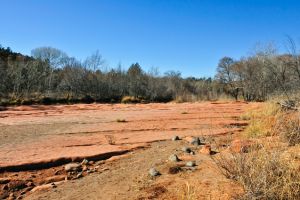 At first glance, Arizona’s biggest SHTF risk comes from the environment.
At first glance, Arizona’s biggest SHTF risk comes from the environment.
Extreme heat, desert drought conditions, and the risk of wildfires are all potential widespread concerns. Yet it’s other external factors that put Arizona at the greatest risk should the United States suffer a period of prolonged strife.
The agricultural base in Arizona relies solely on managed water systems which would likely be compromised in a SHTF scenario. Arizona’s economy also relies heavily on outside tourism dollars. If these systems fail, and the US military is overtaxed elsewhere the severe crime issues just over the border can easily spill into Arizona from Mexico.
Arkansas
The frequency of widespread severe storms, flooding, and being in tornado alley all increase Arkansas’ risk of suffering a SHTF situation. You also shouldn’t forget about the nearby New Madrid fault system which can and will one day cause a severe earthquake.
There’s also a SHTF concern from the largely agricultural base the Arkansas economy relies on. Crop failures, severe drought, and crop disease can strain the population, which spikes the risk of civil unrest throughout the region.
California
California’s high SHTF risks, from its imminent seismic threats to the relentless wildfires, paint a challenging survival scenario. The state’s dependency on external water sources only heightens the danger, as any disruption could leave millions stranded in an arid, desperate landscape. With such dense population centers along the coast, historical events like the L.A. Riots underscore the volatility and potential for civil unrest during crises.
There’s also the problem of California’s strategic value to foreign powers. If it was an independent country the Golden State would be the fifth-largest economy in the world. It is also festooned with important military bases like the San Diego Naval Base, Marine Corps Air Station Miramar, and Fort Hunter Liggett just to name a few.
Given California’s strategic military importance and the sheer scale of its economy, the stakes are incredibly high. In preparing for such scenarios, understanding the environment and having a solid plan is crucial. For those looking to better prepare, Joel Lambert’s A Navy SEAL’s Bug-In Guide offers practical, no-nonsense advice on how to stay safe and secure when staying put becomes the best—or only—option. This guide could be an invaluable resource in navigating the unique challenges posed by California’s potential SHTF situations.
Colorado
Colorado has its fair share of weather-related concerns. The mountainous parts of the state can be crippled by snow. Many mountain regions were only capable of being settled thanks to modern avalanche management strategies, which can go unattended during times of strife. Eastern Colorado is also prone to catastrophic droughts as well as being part of tornado alley.
 Yet I think Colorado’s military importance is what gives it more SHTF risk.
Yet I think Colorado’s military importance is what gives it more SHTF risk.
This starts with Fort Carson and Peterson Space Force Base.
Colorado is also home to Cheyenne Mountain which NORAD and the US Space Command use as a control center.
A foreign power that wanted to beat the clock on mutually assured destruction, would have to target Cheyenne Mountain with a massive attack, which would wreak unearthly devastation on whatever was left of Colorado.
Connecticut
The biggest SHTF risk in Connecticut comes from the population density and its proximity to other densely populated areas like New York City and Boston. This means that if there is a severe problem that affects the entire region, there will be a lot of competition for resources. Any attempts to bug out will be thwarted by the sheer volume of people between you and the wilderness of places like Upstate New York, Vermont, New Hampshire, and Maine.
There’s also some SHTF risk from natural disasters. While hurricanes this far north are rare and weak they can bring severe storm surges. There’s also the winter threat of Nor’easters and blizzards like the Ground Hog’s Day Blizzard.
Florida
Florida’s biggest SHTF risk comes from hurricanes, which threaten to devastate some parts of the state almost every year. You also have to keep in mind that much of Florida’s coastal regions are densely populated and low-lying.
While the locals have a certain tolerance for disorder after a disaster, there’s a tipping point where people start turning on each other for necessities. This can turn into a powder keg for civil unrest if relief efforts after a natural disaster are delayed.
In the chaos of widespread civil unrest, cities can turn into war zones fast. When things get too hot, heading for the hills might be your only shot at staying safe. But surviving out there isn’t just about knowing the basics—it’s about mastering the long game.
That’s why I rely on this guide. It’s not your run-of-the-mill survival manual; it’s a no-nonsense tool that teaches you the old-school wisdom of our ancestors who knew how to live off the land and thrived there.
So, when you’re gearing up to make your escape, make sure this handbook is in your backpack. It could be the game-changer you need when everything else goes sideways.
Georgia
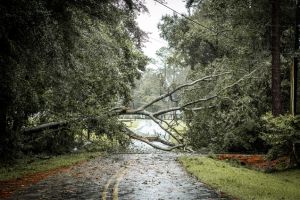 Hurricanes and regional flooding are some of the more common natural disasters that can cause a SHTF situation in Georgia. There’s also a risk for spring and early summer tornados that can devastate large swaths of the Peach State. It’s when these natural disasters affect Georgia’s declining infrastructure blocking relief that the SHTF risk starts to spike.
Hurricanes and regional flooding are some of the more common natural disasters that can cause a SHTF situation in Georgia. There’s also a risk for spring and early summer tornados that can devastate large swaths of the Peach State. It’s when these natural disasters affect Georgia’s declining infrastructure blocking relief that the SHTF risk starts to spike.
This is when income inequality, and racial and political tensions turn up the risk of civil unrest and widespread lawlessness, further impeding relief efforts.
Hawaii
Hawaii has long been a military target for foreign powers looking to cripple the US naval presence in the Pacific and beyond. Any sort of large-scale attack that hits Hawaii will also expose the fact that most of the population is dependent on imported goods. Most of which will run out in less than two weeks.
Related: $100 Walmart Prepper Food Run in 2024
There’s also the constant threat of tsunamis and earthquakes to be wary of. A major tsunami event like the one that devastated Hilo in 1946 could decimate Hawaiian ports. This could make it extremely difficult to bring in all the necessary supplies the island population needs in a SHTF situation.
Idaho
Wildfires and the distribution of water resources stand as the biggest SHTF threats to Idaho. Especially in the arid regions near the Oregon border where infrastructure can be sparse in places.
Militarily Idaho is also the home to the Mountain Home Air Force Base which plays a critical role in supporting U.S. national security interests worldwide. It’s also a major training center, and as home to the 366th Fighter Wing is a crucial piece of the Northwestern defense infrastructure.
Illinois
The more populated areas of Illinois such as Chicago and Peoria suffer from aging infrastructure. There’s also a heightened risk of crime and civil unrest in the areas of urban sprawl. Not to mention the infamous tornado alley continues to creep deeper and deeper into the heart of Illinois. The risk of concern here only goes up when you consider that many of Illinois’ low-lying agricultural regions rely on water management systems.
Any one of these problems on its own might be manageable. It’s when two or more of these factors occur simultaneously that the SHTF risk factor starts to increase dramatically!
Indiana
 Indiana’s reliance on manufacturing and its aging infrastructure can serve as a powder keg increasing the strife people could experience when SHTF.
Indiana’s reliance on manufacturing and its aging infrastructure can serve as a powder keg increasing the strife people could experience when SHTF.
We can look at the 2008 recession’s impact on Indiana to see proof of how economic downturns can rock the state.
One also shouldn’t underestimate Indiana’s role in refining oil into gasoline. A foreign power or terrorist organization striking the Whiting refinery, or the Country Mark Cooperative in Mount Vernon could cripple gasoline infrastructure throughout the Midwest and Eastern seaboard for months if not years!
Iowa
Severe weather, flooding, and agricultural stress are the top risks for a SHTF scenario in Iowa. These natural disasters are only compounded by the state’s aging infrastructure.
If a widespread natural disaster strikes Iowa during times of strife for the rest of the US, relief efforts might be sparse. Flooding and infrastructure failures will only compound struggling relief efforts.
Kansas
Being in the heart of Tornado Alley certainly puts all of Kansas at risk for natural disasters. Kansas also has several military targets that a foreign power might be tempted to strike as part of a full-scale invasion. Not the least of which include Fort Riley and Fort Leavenworth.
Related: Food Prepping Skills I Learned in the Military
It’s also worth bearing in mind that Kansas is prone to severe droughts. In recent decades tapping into the Ogallala Aquifer has kept these weather trends from crippling the state’s agriculture. However, it’s at risk of running dry or being badly depleted within this generation.
Kentucky
On average, Kentucky has a low SHTF risk. Natural disasters like tornadoes, flooding and widespread winter ice storms are a serious concern to the Bluegrass State. There’s also the potential earthquake threat of the New Madrid Fault in Eastern Kentucky.
Fort Campbell does increase Kentucky’s target viability to hostile foreign powers. Yet there are likely juicier targets to the south and east. This might make Kentucky less of a target in anything short of a large-scale assault on US soil.
Louisiana
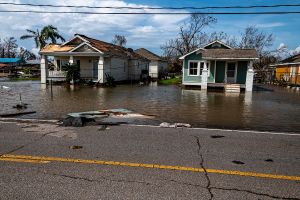 Louisiana and the other states along the Gulf of Mexico are always at heightened risk for massive hurricanes that can cripple the infrastructure for months or even years.
Louisiana and the other states along the Gulf of Mexico are always at heightened risk for massive hurricanes that can cripple the infrastructure for months or even years.
We don’t have to look past the aftermath of Hurricane Katrina to see proof of how natural disasters can cripple this region.
You also have to take into account that Louisianna holds a sizeable portion of the US strategic oil reserve. The Gulf Coast states also play a critical role in US offshore oil production. Any sort of strike here would have catastrophic consequences on energy infrastructure.
Maine
Down East coastal Maine does have high enough population density that it could experience some “People Problems” in a SHTF situation. However, the bigger concern is people fleeing from natural disasters in other parts of New England will flock toward Maine’s largely untouched wilderness. This makes “Other People” the biggest risk to Maine should SHTF.
Maryland
Maryland’s proximity to Washington D.C. and being the heart of the Chesapeake Bay give Maryland one of the highest SHTF risks of any state. You also need to consider Maryland’s importance as a cargo port, which was on full display during the Francis Scott Key Bridge incident.
Sea level rise and erosion throughout the Chesapeake Bay area also puts Maryland at increased risk of a SHTF situation from a natural disaster. Hurricanes and strong storms that send storm surges up the Chesapeake Bay can disastrously inundate Maryland’s expansive coastal network of communities. Potentially cutting off access to relief.
Massachusetts
Population density and high visibility make up the core of Massachusetts SHTF risk. We see this on display with things like the Boston Marathon bombing, and the fact that the 9/11 Terrorist attacks started in Boston.
The problem with any disaster that strikes New England, in general, is that Massachusetts citizens have nowhere to bug out to. While also being in the face of millions of other people trying to bug out to other states like Maine, New Hampshire, and Vermont. There’s a real risk of a lot of strangers ending up in your backyard, increasing the already high competition for local resources.
Michigan
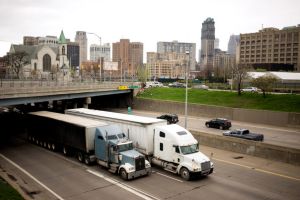 While Michigan is one of the safer states when it comes to SHTF risk, it still suffers from widespread aging infrastructure. Especially in urbanized areas like Detroit and Flint.
While Michigan is one of the safer states when it comes to SHTF risk, it still suffers from widespread aging infrastructure. Especially in urbanized areas like Detroit and Flint.
Michigan can also suffer from some brutal winters.
Related: Stronger Than the Grid
Not only does the cold of the upper Midwest hit the Great Lakes state hard, but many areas are inundated with lake-effect snow in the winter. If a major disaster strikes the country on the heels of a major winter storm, many communities in Michigan could be cut off and left out in the cold.
Minnesota
Minnesota has a relatively low SHTF risk when it comes to military value. Outside of brutally cold winters, it isn’t threatened by major natural disasters. There are even a lot of abundant natural resources to tap into should one need to bug in or bug-out to a cabin.
However, the biggest risk to Minnesota comes from the states to the west. The Dakotas and Montana are home to a high number of ICBMs. Any nuclear assault that hits those states will set radioactive material straight at Minnesota on the prevailing westerly winds.
Mississippi
Poverty, decaying infrastructure, and the prevalence of tropical storms give Mississippi a higher-than-average SHTF risk. We’ve all seen what happens when massive hurricanes hit Mississippi and the prolonged relief and recovery efforts.
Should a natural disaster strike the Gulf Coast during a stiff economic downturn or cause the flood management infrastructure to fail, it could leave Mississippi in a world of hurt. With dwindling resources, and little aid available, the people living in the area could easily start turning on each other.
Missouri
A combination of natural disasters and aging infrastructure poses the greatest SHTF risk for the state of Missouri. When you consider it’s in the heart of Tornado Alley, at the conflux of two major rivers prone to flooding, and sitting on the New Madrid fault zone, the ingredients for a perfect storm are all there.
Montana, Wyoming & Idaho
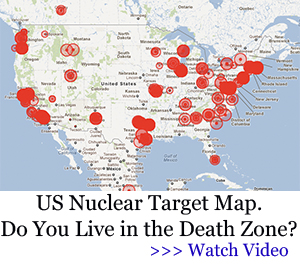 The biggest SHTF risk in Montana comes from the nuclear missile silos positioned there. If the numbers are vaguely accurate, Montana has over 150 ICBMs.
The biggest SHTF risk in Montana comes from the nuclear missile silos positioned there. If the numbers are vaguely accurate, Montana has over 150 ICBMs.
This makes the whole northern Rockies a potential target for a nuclear counterattack, or an EMP.
If you’re thinking about moving there, the tough winters are a factor that definitely puts you at risk.
If you currently live there, then you’ve already got what it takes to tough out the weather.
Nebraska
While many think of Nebraska as a “Fly Over State” its agricultural importance and strategic risk can’t be ignored. Rocked by tornado alley in the spring and summer, the winters in Nebraska can be equally cruel, and have a knack for shutting the state down when blizzard winds howl for too long.
Nebraska is also on the verge of a water crisis. Large sections of the Platte River dry up during summer droughts. The local agriculture thus relies on the Ogallala Aquifer, which is doomed for eventual depletion within this generation.
Nevada
In the heart of the Great Basin, arid conditions always pose a looming risk for the state of Nevada. There are also risks of flash flooding and landslides which could close mountain passes and impede relief efforts.
Twenty years ago, Nevada would have been a major military target. Yet the general public getting wise to all the skunk works and black ops development in the Great Basin prompted the US government to take it elsewhere. Savvy foreign powers who need to make the most out of a strike-first strategy will likely look elsewhere, lowering the SHTF threat to Nevada.
New Hampshire & Vermont
Their small size and shared presence in New England give New Hampshire and Vermont a very similar SHTF risk. The populated parts of the state have the same “People Problems” as any urban area.
Related: How to Cut Out the Weight of Your Bug Out Bag
It’s when people bug out of those cities into the wild portions of these small states that things get complicated. There simply aren’t enough resources in a SHTF situation to support that mass of humanity.
New Jersey
 Population density and proximity to other critical targets along the Eastern Seaboard give New Jersey an uncomfortably high SHTF risk. Especially in areas near New York City which are a prized target for terrorists and foreign powers.
Population density and proximity to other critical targets along the Eastern Seaboard give New Jersey an uncomfortably high SHTF risk. Especially in areas near New York City which are a prized target for terrorists and foreign powers.
In a bug-out situation, there is some hope of being able to escape into the New Jersey Pine Barrens.
It’s a region that’s made remoted by the swamps and twisting roads. Only people who know the area well can navigate it successfully. This could prove to be the only viable bug-out destination in the whole of the Garden State.
New Mexico
The presence of nuclear missile silos and Kirkland Air Forces base increases New Mexico’s SHTF risk as a target area. scenario. Obviously, there’s more going on in this part of the United States than the government wants to let on, and foreign powers know it. This could easily make New Mexico the target of a nuclear strike or EMP.
The arid climate of New Mexico and the extreme heat of summer can also complicate any disasters that befall the southwestern states. In a scenario where you do have to bug out, the heat can kill.
New York
New York City is arguably the biggest target outside of Washington D.C. for both terrorist organizations and hostile foreign powers. The population density of the city and surrounding suburbs makes it nearly impossible to bug out, and if you bug in the competition for resources will be fierce.
If you’re considering a bug-out plan and want to be well-prepared for surviving in the wild, check out the Wilderness Long-Term Survival Guide by Nicole Apelian. Nicole, who famously survived 57 days alone on Vancouver Island in the History Channel’s Alone, offers expert advice on thriving in the wilderness. I found her insights invaluable and decided to get a copy right away. Her guide could be a game-changer for anyone serious about long-term survival skills.
Outside of New York City, in upstate New York, the population problem drops as does the SHTF risk. It’s mostly small farm communities, that have the ability to subsist. If you live here, the biggest threat is people bugging-out of the city in droves.
North Carolina
 North Carolina has a large military footprint with over 112,000 active-duty service members stationed there. A foreign power or terrorist organization could easily see this region as a potential target.
North Carolina has a large military footprint with over 112,000 active-duty service members stationed there. A foreign power or terrorist organization could easily see this region as a potential target.
There’s also the very real risk of hurricanes flooding and knocking out power in the coastal regions.
If the National Guard and other military entities are already engaged in relief efforts, the entire region’s SHTF risk goes up.
North Dakota
The biggest SHTF risks about North Dakota is the presence of so many nuclear missile silos as well as a few air force bases of strategic importance. There are also vast oil reserves in the Williston basin which increase Dakota’s target value appeal to a foreign power.
If the coasts of the United States were hit, and the strategic oil reserves in Texas and Louisiana were compromised, the US military effort would rely heavily on North Dakota’s oil reserves. A wise foreign power would recognize this and certainly direct some portion of their attack at the Peace Garden State.
Ohio
Ohio’s SHTF risk has dropped steadily over the last 50 years or so. It’s no longer considered a major port region and has minimal strategic importance to terrorist or hostile foreign powers.
Related: What Should You Do in Case of a Terrorist Attack?
The aging infrastructure and vast urbanization of Ohio stand as its biggest problems in a SHTF scenario. In a widespread disaster, the people of Ohio would be hard-pressed to bug out to safety and would face tough competition for resources.
Oklahoma
Oklahoma being in the heart of tornado alley, increases the risk of widespread storm devastation. If the state and federal governments are already stressed, the aftermath of a tornado outbreak in Oklahoma could leave millions desperate for aid.
However, the bigger SHTF risk for Oklahoma and the Southern Plains states comes from long-term weather trends. This area has long been prone to epic droughts, which history witnessed during the Dust Bowl. If the aging water infrastructure fails during a drought, the Sooner State could fall into deep strife.
Oregon
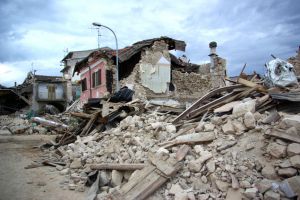 Earthquakes, wildfires, and drought are the top natural disaster risks for the Beaver State.
Earthquakes, wildfires, and drought are the top natural disaster risks for the Beaver State.
This part of the Pacific Northwest is home to a fault structure that can produce a massive tsunami wave within minutes after a large earthquake. This could devastate much of coastal Oregon and Portland.
On the one hand, Oregon isn’t much of a nuclear target for a hostile foreign power. On the other hand, it sits between Washington State and Northern California, which are juicy targets. This could easily spill devastation into Oregon.
Pennsylvania
While it doesn’t have major strategic value and isn’t prone to massive natural disasters, Pennsylvania’s proximity to other targets complicates its SHTF risk. Especially in Philadelphia in the east and Pittsburgh in the west, where population density and poverty are serious problems.
The middle of Pennsylvania has a lower SHTF risk. There’s a lot of Amish country here with resources available. Without being any sort of military target. It’s possible to bug out to these locations for better chances of survival if you see a SHTF problem on the horizon.
Rhode Island
Rhode Island itself isn’t much of a target for hostile invaders. Unfortunately, being surrounded by a lot of other juicy targets like New York City and Boston raises Rhode Island’s SHTF risk.
You also can’t rule out storm surge complications anytime a hurricane threatens the eastern seaboard. Since much of the state is flat, if Rhode Island’s infrastructure fails during a major storm, the flooding could be immense.
South Carolina
Flooding and hurricane storm surge are the two biggest types of natural disasters driving up South Carolina’s SHTF risk. The Palmetto state has long been prone to flooding, and if its aging infrastructure fails during a massive storm the entire region could be inundated for months!
The Naval Weapons Station based out of Charleston also has high strategic value to foreign powers. A targeted strike there would do more than hurt the US Atlantic fleet, it would also devastate much of South Carolina.
South Dakota
While South Dakota no longer has the massive warhead threat it used to, its proximity to other states that are armed to the teeth increases its SHTF threat. Any military strikes that hit North Dakota, Colorado, Montana, or Wyoming will inevitably spill over destruction onto South Dakota.
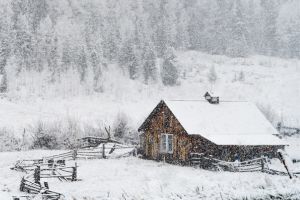 South Dakota’s winters shouldn’t be taken for granted. They can be bitterly cold, with massive snow events followed by crippling ground blizzards. Interstates close for days at a time, making emergency aid all but impossible.
South Dakota’s winters shouldn’t be taken for granted. They can be bitterly cold, with massive snow events followed by crippling ground blizzards. Interstates close for days at a time, making emergency aid all but impossible.
Related: The First Thing You Should Do in a Winter Blackout
Tennessee
Tennessee isn’t much of a strategic target for other nations and terrorist groups. Aside from spring and summer tornadoes and the occasional winter ice storm, there aren’t a lot of natural disasters that strike the region.
Oak Ridge Tennessee’s nuclear facility is still active. An incident or an A-symmetrical attack here could spill over toxic, radioactive risks to surrounding portions of the Volunteer state.
Texas
Hurricanes, high drought risk, wildfires, tornadoes, and the potential for catastrophic winter ice storms ping the natural disaster risk radar for the state of Texas. We need only look to events like Hurricane Harvey and the ice storm of 2021 to see what widespread damage Mother Nature can do to Texas.
Texas also has major strategic value to terrorists and foreign powers. It houses a large percentage of the United States strategic oil reserve, which could cripple the United States if compromised. There are also over 110,000 active-duty members of the US military stationed in various military bases throughout the Lone Star state.
Given this combination of natural and man-made risks, the potential for an EMP attack targeting Texas is a serious concern. Such an event could knock out power grids, cripple electronic devices, and leave the state’s vital infrastructure in chaos. Protecting against this threat is crucial, and one way to do so is by using an EMP-Proof Cloth, which can safeguard essential electronics from the devastating effects of an EMP. This cloth is designed to block electromagnetic waves, ensuring that anything wrapped in it remains functional even after an EMP strike.
For those preparing for the worst, securing an EMP-Proof Cloth might be one of the most practical steps you can take to protect your critical devices and ensure your survival in the event of a large-scale electromagnetic disruption.
Utah
Utah’s arid climate becomes a major SHTF risk factor, in a scenario where the existing infrastructure is crippled. This element of the state is often underestimated, right up to the moment it becomes dangerous.
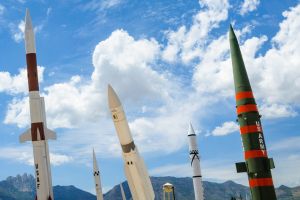
Of course, Utah is also home to several important nuclear installations and military bases. Not the least of which is the White Sands Missile Range and Green River Launch Complex.
In a nuclear attack scenario, a hostile foreign power would paint much of Utah with a bullseye.
Virginia & Washington DC
For obvious reasons Washington DC and Northern Virginia are a prime military targets for any foreign military power or terrorist organizations. The less-spoken about poverty problems outside the beltway are also a major concern for civil unrest, which is only amplified when political tensions run high.
The natural disaster threat to the Chesapeake Bay region is also more serious than some might realize. In the past, Hurricanes Agnes and Hazel as well as an unnamed hurricane in 1933 showed just how disastrous storm surge can be. Sea level rise, erosion, and manmade deterioration in this area only increase the potential risks of a SHTF natural disaster.
Washington
The Pacific Northwest faces a higher SHTF risk due to the earthquakes and volcanic activity present in the region. Some scientists believe there is a massive earthquake due to strike this region offshore, which could send an even more catastrophic tsunami inland faster than most people could escape.
Related: Facing Starvation: How This Economic Crisis Threatens Americans
There’s also a heightened risk of military and terrorist activity due to the heightened military value as well as its increased importance to the Tech sector. This could make the Pacific Northwest a very appealing target for a foreign power looking to wreak havoc with the US.
West Virginia
West Virginia and the other states in the Appalachian Mountains carry very little strategic value to hostile foreign powers. This greatly reduces the SHTF risk from outside attacks. The hollow structure of communities and twisting mountain roads also make it difficult to invade, and easy for locals to bug in.
However, there are some poverty concerns throughout the area. Yet the people of West Virginia tend to do a better job of banding together than tearing each other apart.
Wisconsin
While heart disease from consuming too much cheese and beer is the leading cause of death, Wisconsin has a relatively low SHTF risk. It has almost no military strategic value and modest population density.
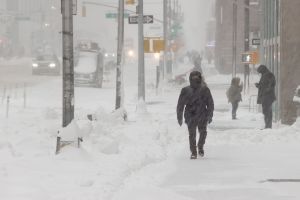 Winters in Wisconsin can be fierce.
Winters in Wisconsin can be fierce.
If a major blizzard or ice storm knocks out power, whole communities can be cut off for days at a time.
So, even though the SHTF risk is low in Wisconsin, one still needs to be reasonably prepared.
Wyoming
The biggest SHTF risk for the cowboy state comes from all the nuclear missile silos it houses. Any foreign power planning a large-scale attack on the US will inevitably make Wyoming a prime target as part of a preemptive attack.
The dry summer weather and tough winters in Wyoming are also challenging, and many parts of the state find themselves cut off at random times. If you’re already from Wyoming, this is a minor factor, as you have what it takes to handle what nature throws at you. If you’re considering moving to Wyoming, learning to roll with nature’s punches could be prohibitive.
The states with the highest SHTF risks include California, Illinois, New York, Hawaii, and Florida. Washington D.C. Maryland and Northern Virginia also top the list due to their strategic value and the risk of natural disasters.
In all of these cases, there’s also some inherent risk that comes with high population density compared to the available natural resources. When something does go wrong, people living in these high SHTF risk areas face further face “People Problems” in regard to safety and resources.
If you’re thinking about moving, or you just want to wipe the sweat from your brow, some of the lowest SHTF risk states include Wisconsin, Minnesota, West Virginia, Kentucky, and Tennessee. These states have low population density, low risk of major natural disasters, and little strategic value.
Remember that nowhere in North America carries a zero SHTF risk. Even a state like South Dakota with little strategic value can still suffer disastrous consequences from freak weather, or fallout from an attack on a neighboring state.
You may also like:
 6 Practical Uses for Autumn-Falling Leaves
6 Practical Uses for Autumn-Falling Leaves
How to Avoid Being Targeted by Looters During Civil Unrest (Video)
Survival Tools And Gear You Should Avoid When SHTF

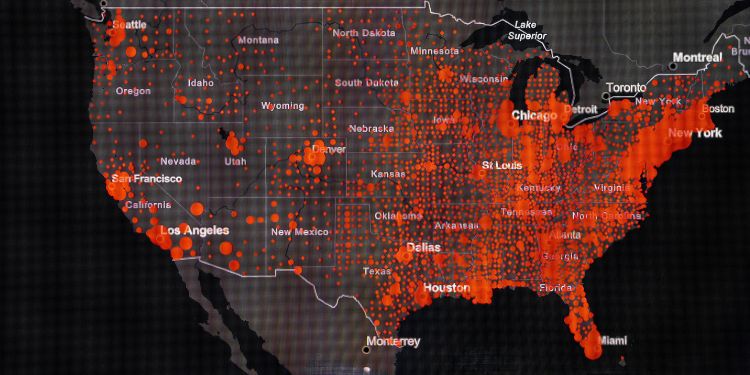





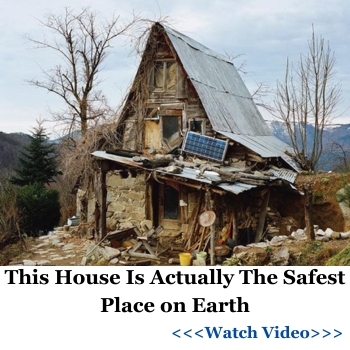






Remember the more populated or dense the area the higher risk
no matter where or what you have to prepare for your area
no one can tell you how to prepare , guidelines , but you will have to bear your burden
and like we see around the world , there is no where you can hide that cannot be seen or taken
Best to have things in place and order . so either way your prepared
Preppers be ware , you have more than you think to worry about .
with the amt of criminals , and Godless, Forien invaders pouring into your countries around the world , just like the days of noah , so shall it be
lovers of self , pleasure, no conscience , not remorse, not even a clue of right and wrong.
That is why , God s word , The ten commandments , and Godly preachers of Truth are so important
When it is time , it will happen so fast , you will not have time to prepare
like a thief in the night
Seek out Truth , Godliness, circles of trust , those you can rely on and who wont just satify thier flesh or desire to get all they can
Harden your heart s for Truth
It is bad enough we Americans have open borders. This an other articles mentioned here should not so detailed as to give away OPSEC as many have said before.
This November 5th is a fight for our freedom here in America.
Don’t think God will like us giving up on America as these elites would like us to have a civil war to bring in martial law sooner than expected.
What do you think is going to happen if the Democrats steal the election again? Do you think we are just going to sit back and take it this time or do you think there will be retaliation? And what if President Trump wins this time? Is the left going to start massive riots all over the country? November 5 may be a fight for freedom, but it’s probably going to be a fight either way it goes.
Cleanliness is next to Godliness with the exception of airing out our dirty laundry to the internet world of snakes, thieves an terror groups who scan this information for soft to medium targets. This is the road map the previous enemies would liked to have had decades ago.
Yeah the internet, social media and smart phones will be our downfall, yes sir!
Oregon doesn’t get off so light, not mentioned are Klamath Falls, and of course Portland as targets (PDX airport and shipyard infrastructure). Hawaii and Washington State both have a first strike communications facility in addition to their military bases.
No one is getting off lightly, but do we need to advertise it all to the general public or the future illegal criminals here courtesy of our non-representative bureaucrats in charge.
They are selling us out everyday for love or money.
Look at the criminal politicians who have relations with foreign assets who don’t give a dam about us taxpayers footing the bill of corruption.
Wisconsin has 3 major military bases …….. kinda shows a lack of research
A search revealed several bases and forts but only highlighted two as major.
Military Bases in Wisconsin consist mainly of Fort McCoy and Volk Field. Wisconsin is a Midwestern state with a population of over 1.5 million. The state is known for its cheese curds and scenic rolling hills and farmland.
Wisconsin military Base Fort McCoy
As the only U.S. Army military Base in Wisconsin, Fort McCoy’s facilities offer unique and diverse training courses that help its patrons to become prepared for any mission. The site spans across 60,000 acres, most of which are designated as training grounds. These grounds contain everything from firing ranges to. The massive space at Fort McCoy has been put to good use; it has several kilometers of courses that emulate both urban and rural landscapes. This camp also takes advantage of natural phenomena, like the cold Wisconsin weather, to further test and train the troops in harsh conditions. This Wisconsin military base has truly taken advantage of every available asset to create an elite military training facility.
But Fort McCoy’s benefits don’t just extend to the active and reserve soldiers who train there. This base provides Monroe County with its largest workforce, employing both civilians and military personnel alike. Fort McCoy also holds an active role in the community. Many of the surrounding communities have benefited from Fort McCoy’s facilities, employment opportunities, and donations. The soldiers who use these facilities don’t just serve America abroad; they serve the Americans in their own backyard!
Volk Field Air National Guard Base (Camp Williams)
The Volk Field Air National Guard base is home to Camp Williams, a training center for the Wisconsin National Guard. Volk Field began as a rifle range in 1888. Over time it expanded to cover several hundred acres, and the state government purchased the land and turned it into a training facility for the Wisconsin National Guard. The base soon became an exemplary camp. It was normal for the site to have several visitors there for the purpose of observing its daily operations and functions before creating similar camps of their own. Camp Williams received its name in the late 1920’s, honoring Lieutenant Colonel Charles Williams who had worked at the camp for nearly a decade until his passing that same year. World War I propelled the growth of the base forward, and it had its own airstrip by 1936.
Today, Volk Field Air Base functions as a military airport and Combat Readiness Training Center (CRTC).
The big take away is, do the research in your area. Prepare as best you can. Main thing is not knowing if nature or man will be the culprit or more likely, both.
First thing is to have your soul prepared then prepare for earthly problems.
It is best to know what may come and trust in where your soul may go if things go south with these useful idiots in charge, that we did not elect into office. BOHICA!
Where’s Delaware on this list?
Delaware is close enough to DC in that it should be considered ground zero .
Why are there advertising on the right side of all of the articles so that I can’t read them. These ads block a portion of all of the articles so I can’t see all of the words. If It can’t be changed then I’ll unsubscribe, because it is annoying.
Hey Ray, Get over it. Quit using Windows OS, you are annoying too.
Sound like a troll.
The ‘New Madrid Fault’ is actually in western Ky., not east.
This blog is exceptional. It was a pleasure to read your articles. This book was exceedingly entertaining for me. I have bookmarked it and am enthusiastic about reading additional content. Maintain your exceptional performance!
White Sands Missle Range is in NM, not Utah. Not being critical, any of us could do something similar.